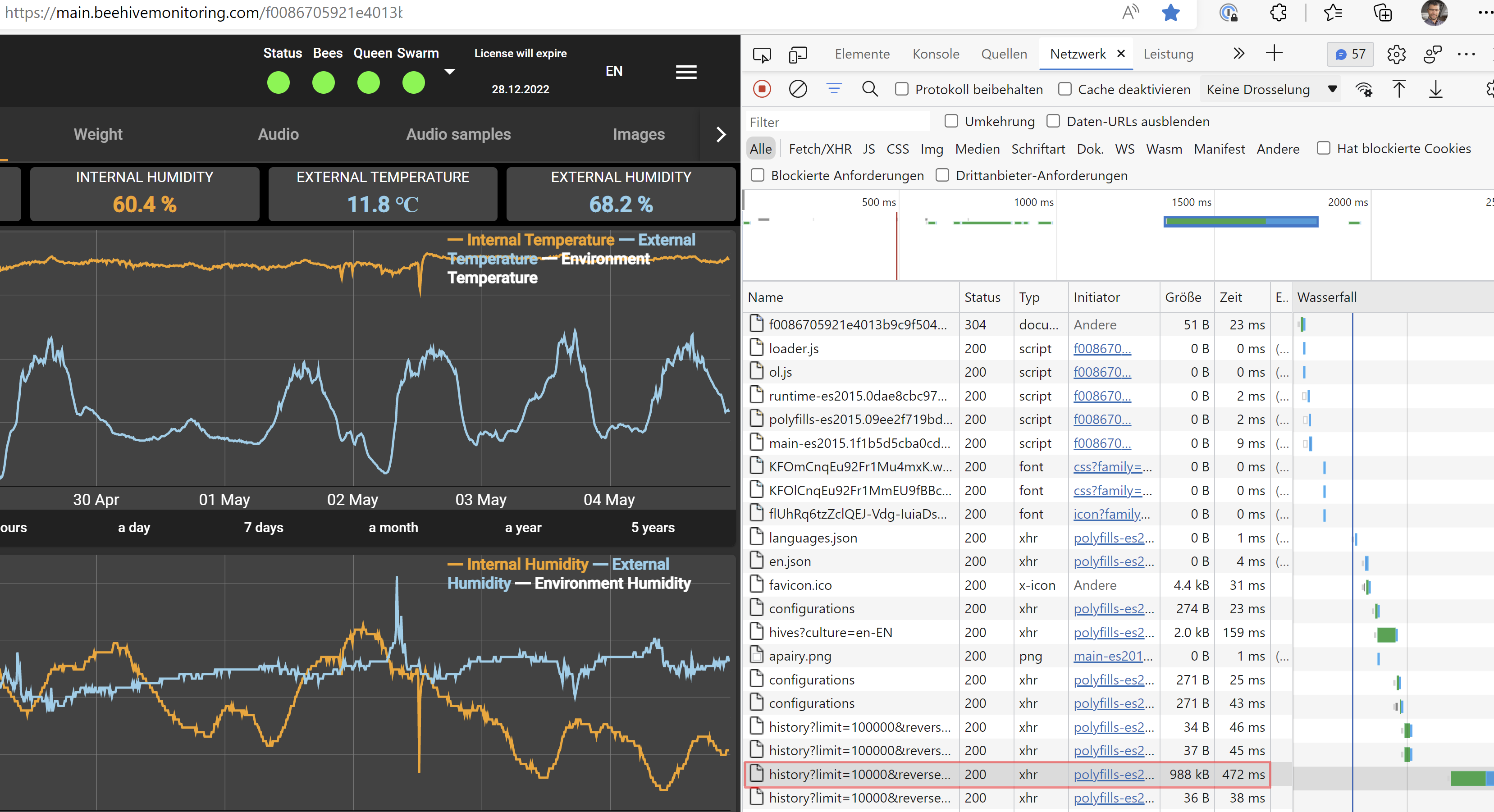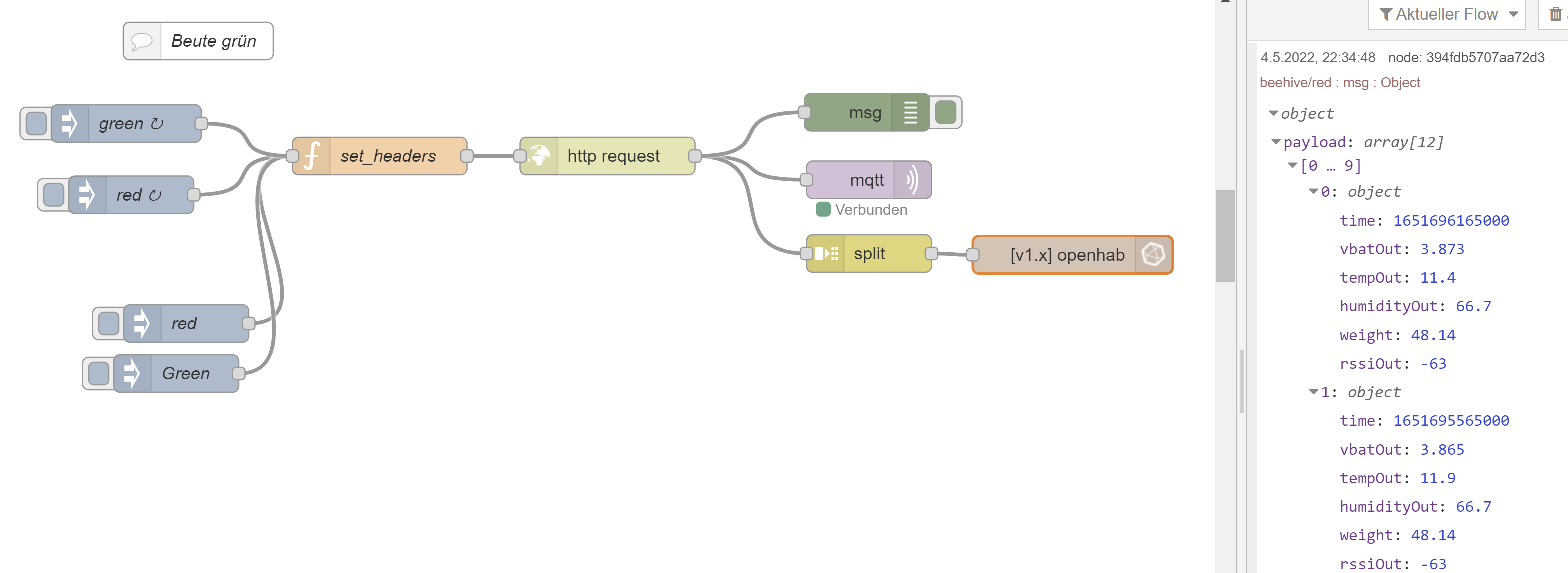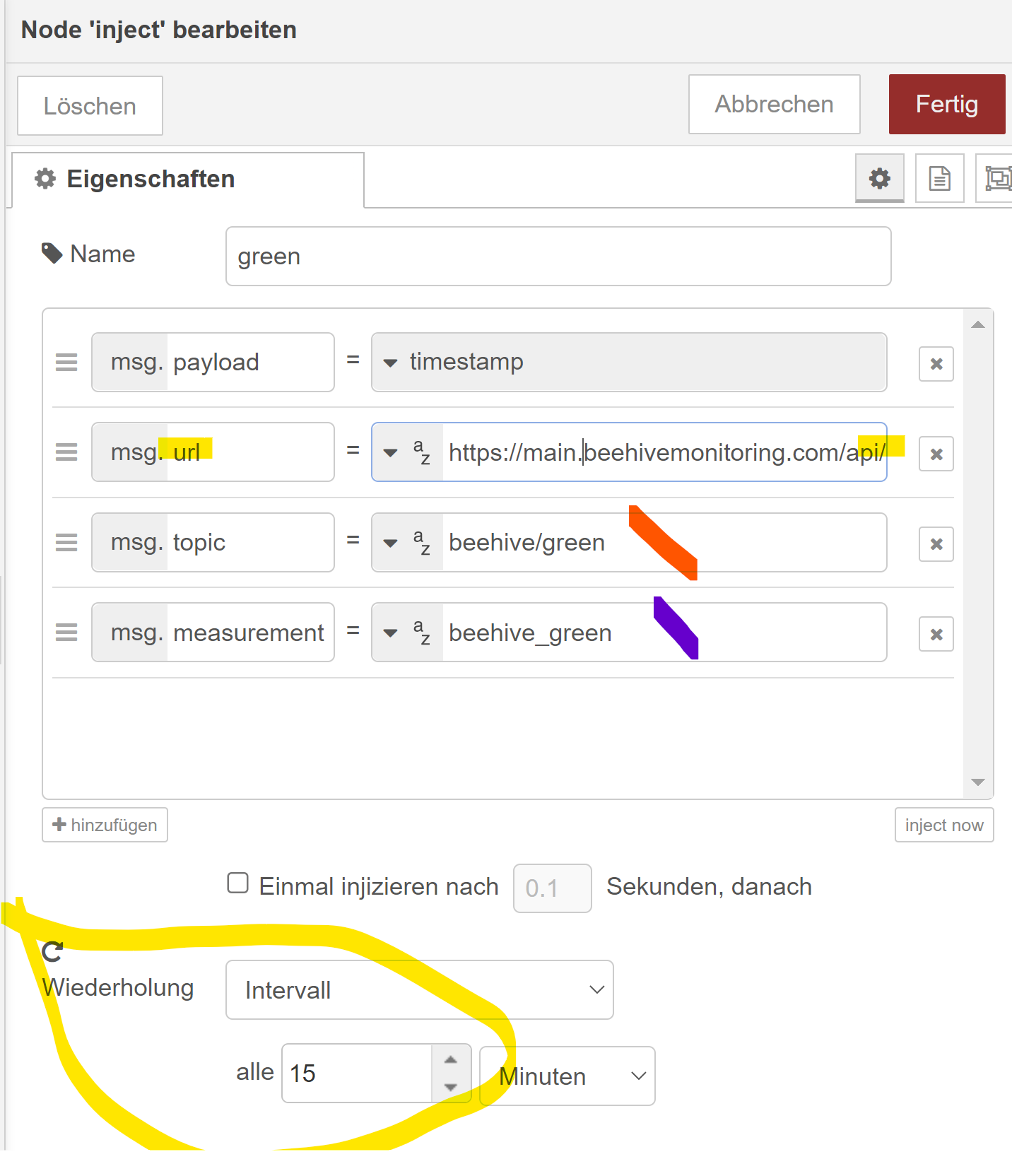This is a Documentation-project for the very good products of beehivemonitoring.com. It will make you able to get the data from the products wether by reading the BLE (data from the products will be emitted by Bluetooth-Low-Energy-Protocoll) with an own BLE device (for example an ESP with openmqttgateway or via API from the data-website of beehivemonitoring.com.
I played a lot with openmqttgateway until i figured the way over API - which is much more easy and relliable - but as it was a lot work the python contains everything i reverse-engineered so far. And it worked until bad weather and a bad case bricked my ESP device...
If you are up to the task you could write a direct support to openmqttgateway with this code. I was done...
The bluezQt-Folder takes a plain-data send of a openmqttgateway and transforms the data to a "readable" format. The beehivemonitoring_devices.py is the simple test-code to adapt the reengineering.
When receiving a scale, or a hiveheart for the first time - you receive a paper with a QR Code to get your Data on your mobile device. This contains also a ---accesskey--- looking like the following
f0086705921e4013b9c9f5fffffffff
This will lead in combinations to your Computer accessible data-homepage https://main.beehivemonitoring.com/---accesskey---
While debugging the website with developer-tools i figured that the following url is delivering your data as plain json format.

The $hivenumber is the ID - which is also documented on the page you received by beehivemonitoring.com.
The $timeback_limit will take historic data - for a regular basis you just need to grab 1 to 3 lines - depending on the devices you attached to the hive-id (hiveheart and so on). More limits will just receive the historic data - which may also be usefull to get historic data.
The attributes is the list of data to be received. I didn't change the default.
Example Url - check for $hivenumber and $timeback_limit for adaptions - also check for the "x-auth-token": "your_accesskey" which needed to be set in the header.
I am a fan of Node-Red - as it makes programming very easy. From here it's easy to regularly grab the url and push the data to MQTT or directly in my case to a influxdb.

The main trick is to set everything in the inject-timer
 topic contains the MQTT topic and measurement the InfluxDB "table".
topic contains the MQTT topic and measurement the InfluxDB "table".
This is the function set_header
msg.headers = {
"accept": "application/json, text/plain, */*",
"accept-language": "de,de-DE;q=0.9,en;q=0.8,en-GB;q=0.7,en-US;q=0.6",
"sec-ch-ua": "\" Not A;Brand\";v=\"99\", \"Chromium\";v=\"100\", \"Microsoft Edge\";v=\"100\"",
"sec-ch-ua-mobile": "?0",
"sec-ch-ua-platform": "\"Windows\"",
"sec-fetch-dest": "empty",
"sec-fetch-mode": "cors",
"sec-fetch-site": "same-origin",
"webapphive": "true",
"x-auth-token": "your_accesskey"
};
msg.referrer = "https://main.beehivemonitoring.com/your_accesskey";
msg.referrerPolicy = "strict-origin-when-cross-origin";
msg.mode = "cors";
msg.credentials = "include";
return msg;